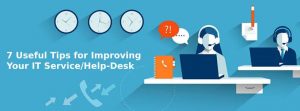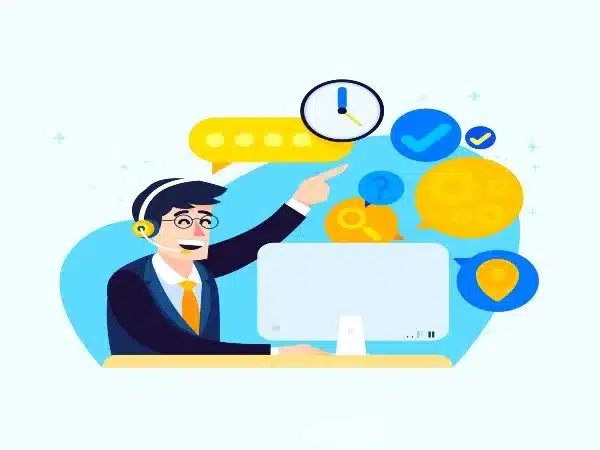What is IT Helpdesk Services & Why is It Important?
September 13, 2019Advantages of Using Outsourced IT Help Desk Support
March 17, 2020

- Find out where your knowledge is and centralize it (Building knowledgebase articles) – As technology evolves, knowledge will exist in more and more disparate places. Information gets stuck in email, social media interactions, forum discussions, comments, tickets, and even in the brains of individual service desk agents. If you don’t already have one, aggregate your knowledge in a single repository or system as an easy solution. Centralizing all of that content accelerates learning and helps your team make better decisions. If one person holds knowledge about a particular system, have them document it. If customers are commenting about a service, update your documents with that feedback. If your team receives multiple common tickets, create an article about the topic. Important – having a “knowledge base” to work from helps agents respond to and resolve issues faster in an It help-desk environment.
- Establish Early defined Goals – Drafting goals for performance should be on top of the priority for an IT help desk services. Our First Touch Resolution numbers down in the 60th and 70th percentiles? Consider setting a goal for 80 per cent. It’s a good idea to clarify where your team currently stands and what metrics they will need to meet in order to improve performance.
- Use Proactive and Reactive Escalation Mechanisms – Without a proper SLA mechanism in place, end-users lack visibility into their tickets’ resolution times. Define and configure separate resolution and response SLAs with multi-level proactive and reactive escalations. That way, you can let end-users know the resolution and response due times. You can choose to escalate after or before a missed SLA deadline to be either reactive or proactive in a managed help desk services environment.
- Provide the Right Training for Your Help Desk Workers – Properly trained IT technicians can solve more issues and solve them quickly without having to escalate problems as frequently in an IT help desk services. This can improve internal customer service levels because employees don’t have to wait for an email or a call back from a higher level service provider. Another great strategy is to actually provide employees with ITIL certification training. The ITIL framework ensures companies deliver a consistent and predictable level of service based on industry best practices. Having a service desk vendor that understands the importance of ITIL can maximize your end-user experience.
- Deflect tickets with self-service – Not only is knowledge management critical for agents, but it’s also important to customers. 60% of consumers use web self-service to find answers to their questions. If knowledge isn’t optimally collected and shared, customers will simply go somewhere else for answers. Why not allow them to search for answers from a customer portal or Intranet? Enabling self-service both satisfies customers and frees up time for your team. In fact, the results of applying knowledge-centred support can mean up to 50% incident deflection.
- Invest in New Technology – Are you empowering your technicians and employees with the latest technology? Outdated technology can slow down your work process and gives team members less flexibility to handle any given situation. Many of the IT service management operations can now be automated, like self-service portals powered by AI. Other AI-related technologies like chatbots are freeing up time for everyone involved, leaving staff members free to handle only the most urgent situations.
- Establish a System of Rewards and Penalties – What can your IT staff expect if they meet their goals? What should they expect if they fail to meet their goals — either personally or as a team? Rewards and accountability can be an effective strategy for improving the productivity of any work team. Just make sure the rewards are worth working for and the accountability measures are realistic and communicated to team members ahead of time. Finally, give your new plan for improving performance time to work. True impact can’t be measured overnight, so continue to track, measure, and improve over time.




